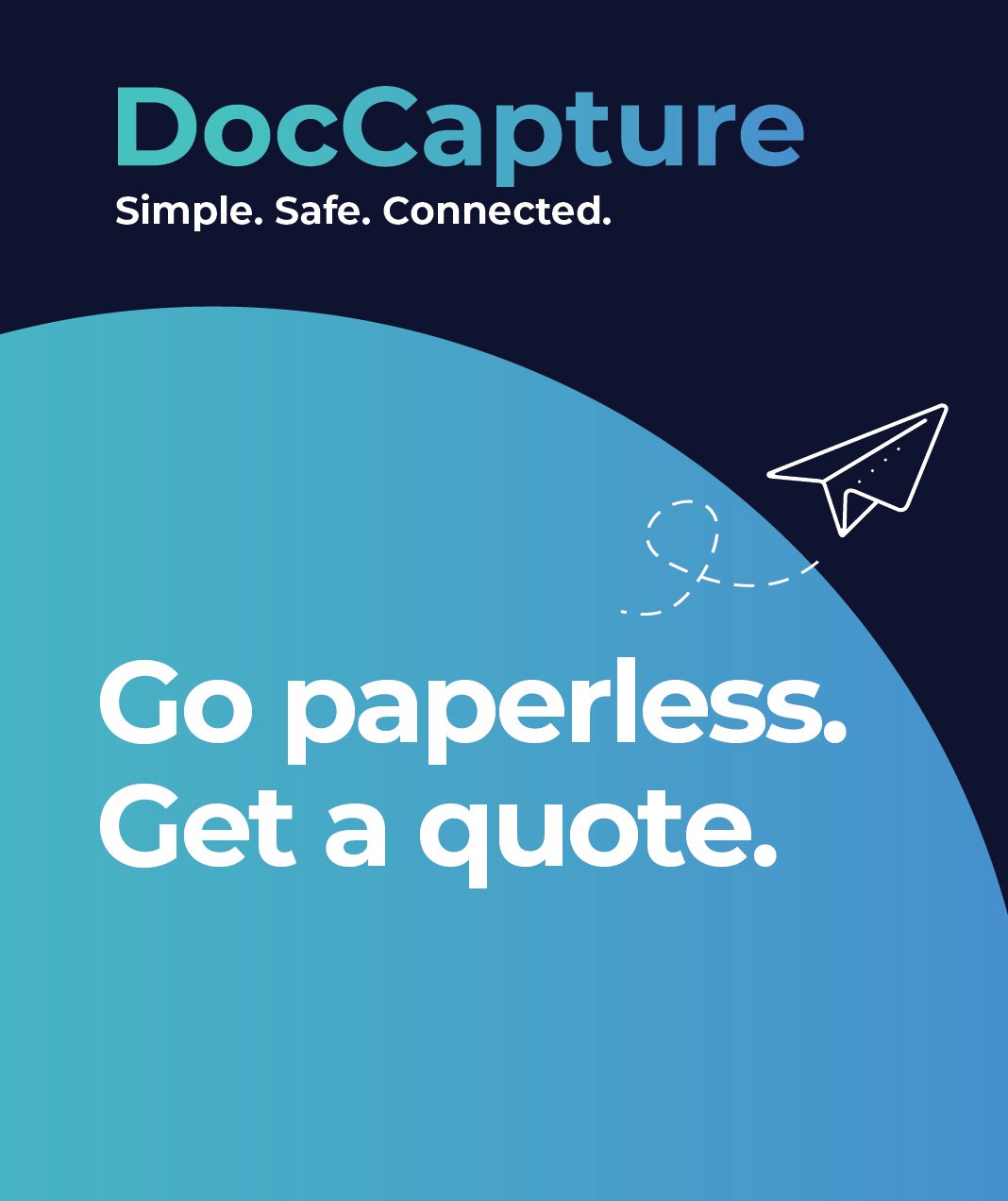Financial Services Document Management: Your Data Secure & Accessible
Table of contents
In the high-stakes world of financial services, information is power—and responsibility. Every day, banks, insurance companies, and investment firms generate and handle vast quantities of sensitive documents. From client records and transaction logs to compliance paperwork, the sheer volume and complexity of financial data make secure, efficient document handling not just a best practice, but a business imperative.
Traditional paper-based systems or disjointed digital storage can leave financial institutions vulnerable to compliance failures, data breaches, and operational inefficiencies. As regulatory demands intensify and competition accelerates, forward-thinking organizations are turning to digital document management solutions. These tools not only streamline daily operations but also reinforce the pillars of data protection and regulatory compliance, helping institutions stay agile, audit-ready, and client-focused.
The Need for Smarter Document Management in Finance
Financial institutions operate under intense scrutiny and regulatory oversight. With regulations like SOX, FINRA, and GDPR shaping operational policies, maintaining meticulous records and ensuring secure access to information is non-negotiable. Yet many firms still rely on outdated systems—either entirely paper-based or fragmented digital setups that lack integration.
These legacy systems create several critical challenges:
-
Security Risks: Paper documents are susceptible to loss, theft, or damage, and basic digital storage lacks the encryption and access control modern threats demand.
-
Compliance Gaps: Manual processes increase the risk of non-compliance with record retention laws, audit trails, and data privacy requirements.
-
Inefficiency: Employees waste valuable time searching for documents, managing approvals, or re-entering data across systems.
-
Scalability Issues: As organizations grow, handling larger volumes of documents without automated workflows becomes increasingly unmanageable.
Modern document management systems address these issues head-on, offering secure, centralized repositories with version control, role-based access, and automated compliance checks. By digitizing and automating document processes, financial firms can reduce human error, lower operational costs, and confidently meet audit requirements.
Key Benefits of Document Management Systems in Financial Services
Modern document management systems (DMS) provide financial institutions with a suite of tools designed to enhance performance, mitigate risks, and support strategic growth. Below are the primary advantages these solutions offer:
Enhanced Security and Compliance
With robust encryption, access controls, and detailed audit trails, DMS platforms significantly improve data security. They ensure sensitive client information is accessible only to authorized users and maintain logs for every document interaction—crucial for compliance with regulations like GLBA and SEC Rule 17a-4.
Improved Operational Efficiency
Automated workflows replace manual tasks such as document routing, approvals, and filing. This reduces bottlenecks and frees staff to focus on higher-value activities. Tools like M-Files and Laserfiche enable employees to retrieve documents instantly using keyword searches, eliminating time lost to file hunting.
Seamless Integration with Financial Systems
Top-tier DMS platforms integrate with core banking systems, CRMs, and accounting software. This connectivity ensures data consistency across platforms and enhances reporting accuracy. For example, DocuWare offers integrations with QuickBooks, SAP, and Microsoft 365.
Business Continuity and Disaster Recovery
Cloud-based document management ensures financial data is securely backed up and accessible even during unexpected disruptions. This resilience is vital for maintaining service during outages, natural disasters, or cyberattacks.
Client Experience and Transparency
Digital access to documents and electronic signatures expedite client interactions. Whether onboarding new clients or processing loan applications, DMS tools improve responsiveness and transparency—key to building trust and loyalty in financial relationships.
Use Cases: Real-World Applications of Document Management
Document management systems are reshaping operations across all segments of the financial sector. Here are key use cases illustrating their practical benefits:
Client Onboarding
Financial institutions often require extensive documentation during onboarding—IDs, financial statements, disclosures, and signed agreements. A DMS automates document collection and verification, tracks submission statuses, and sends reminders to clients or advisors for pending documents. This reduces onboarding times and enhances compliance from the start.
Loan Processing
Banks and credit unions use DMS platforms to streamline loan origination workflows. Solutions like Ellucian and nCino enable institutions to digitally gather borrower information, verify income and collateral, and route documents for internal review and approvals. These capabilities reduce processing times and minimize errors.
Audit Preparation
During audits, document accessibility and version control are crucial. With all records centralized and time-stamped, firms can easily retrieve relevant documentation and demonstrate compliance. DMS platforms also maintain detailed logs of who accessed or modified files, supporting full transparency.
Regulatory Reporting
Automated document classification and archiving help institutions meet mandatory retention schedules and data privacy regulations. Reports can be generated directly from the DMS, ensuring accuracy and timeliness.
Mergers and Acquisitions (M&A)
During due diligence, secure data sharing is critical. DMS platforms with virtual data rooms allow controlled access to confidential documents, expediting M&A transactions while preserving document integrity.
Choosing the Right Document Management Solution
Not all document management systems are created equal, and financial institutions must assess their unique needs before committing to a platform. Here are key factors to consider when selecting the right solution:
Security and Compliance Features
Ensure the platform complies with financial regulations such as FINRA, SEC, and PCI DSS. Look for features like end-to-end encryption, multi-factor authentication, audit logs, and role-based access controls.
Integration Capabilities
A good DMS should seamlessly integrate with your existing core banking, CRM, and accounting systems. This promotes data consistency and enables real-time collaboration across departments. Platforms like DocuWare and M-Files offer extensive integration options.
Scalability
Choose a solution that can grow with your organization. Whether you're managing documents for a regional credit union or a global investment firm, the system should scale without compromising performance or compliance.
User Experience
Adoption hinges on ease of use. The interface should be intuitive, allowing both tech-savvy and non-technical users to navigate the system with minimal training. Mobile access and document scanning apps can also enhance user experience.
Vendor Reputation and Support
Research vendors' track records in the financial sector. Look for customer testimonials, case studies, and service-level agreements (SLAs) that ensure responsive support and ongoing platform updates.
By selecting a solution that aligns with your strategic goals and operational requirements, you lay the foundation for a smoother transition to digital workflows.
Conclusion
As the financial services industry continues to evolve, so too must the way institutions manage their information. Document management systems offer a clear path to improved security, efficiency, and compliance. By replacing outdated, manual processes with streamlined digital workflows, financial firms not only reduce operational risks but also gain a competitive edge through better client service and faster decision-making.
Investing in the right document management solution is not just a technology upgrade—it's a strategic move toward future-proofing your business.
Ready to transform your document processes? Fill out our “Get a Quote” form today and take the first step toward a more secure, efficient, and compliant future.
Share this
You May Also Like
These Related Stories

Enhancing Data Security in HR with Advanced Document Management

Transforming Financial Service Workflows with Document Scanning

